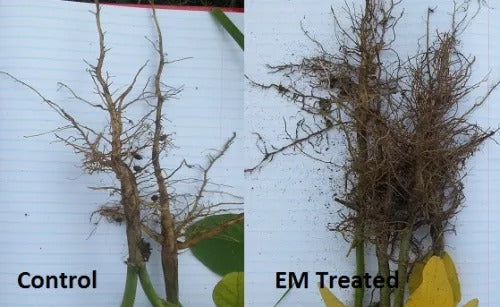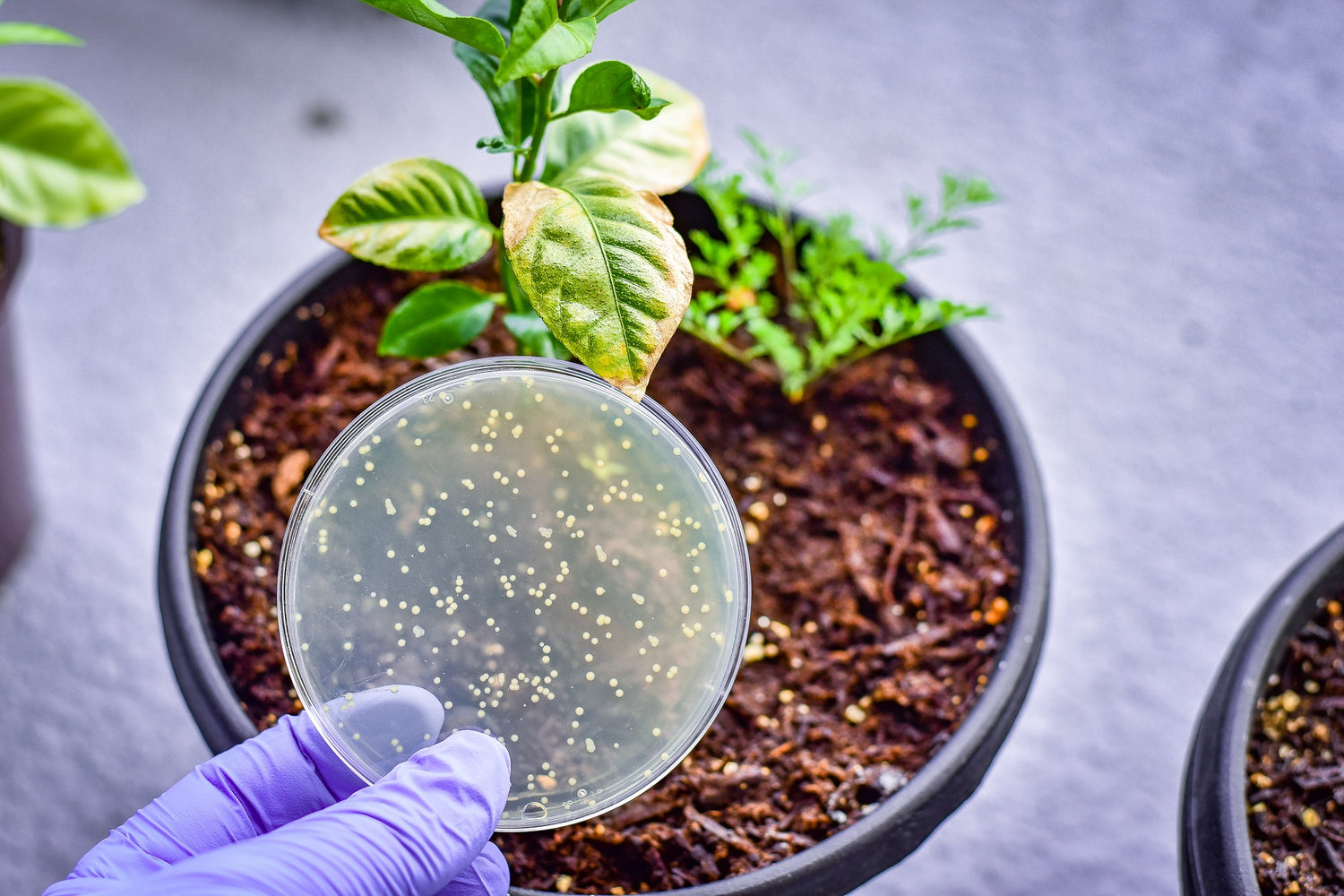Yield successes and failures start in the soil. With a healthy fertile seed bed, germination can be enhanced and root development can be boosted. When root development is inhibited, the climb toward high yields and healthy plants can be a long, uphill battle.
There are a whole host of reasons for which root health is compromised including , poor seed bed development, low fertility, poor biological activity, incorrect crop rotations can help facilitate the growth of soil borne diseases. These diseases impact the crops development and limit the growth potential of the plant. As our population grows and the demand for increased productivity from our farmers to provide food while maintaining a sustainable environment rises, protecting our plants root systems and ensuring healthy roots, is key to helping these seeds reach their full yield potential.
Starting from the Roots
The main function of roots is to anchor the plant and provide access to nutrients, waters and oxygen in the soil. They provide a large surface area – increased by the presence of root hairs – to enable the uptake and absorption of water and nutrients. The roots makeup and growth have a huge effect on the size and vigour of the plants adaptation to soils conditions and response to exterior influences e.g. climate and pests. Often due to the fact that roots are underground they are widely overlooked for their significance in plant health. It has been estimated that 80% of all plant problems start with soil/root problems. The roots of most plants are often prone to attack by soil borne diseases including pathogenic fungi and nematodes. Creating a positive biological environment is essential to allowing roots to thrive and establish access to everything a plant requires. It will also limit the pressure from negative microbes.
Root Development with EM
 EM enhances plant roots increasing both the number and density of root hairs. It does this through the unique combination of microbes and their action in the soil. EM includes bacteria that produce lactic acid. This is a strong sterilizing compound and can suppress some disease inducing microorganisms and nematode populations. It also contributes to the fermentation and breakdown of the tough cellulose and lignin. In turn the yeasts in EM produce hormones and enzymes that promote plant cell and root division. They use the amino acids and sugars secreted by the photosynthetic bacteria and plant roots and in turn give off substances which are beneficial growing compounds for the lactic acid bacteria. So all three species have a separate role to play, and help each other. They also have a symbiotic or mutually beneficial relationship with the roots of plants. So plants grow exceptionally well and root structure is significantly improved in soils dominated by these microorganisms.
EM enhances plant roots increasing both the number and density of root hairs. It does this through the unique combination of microbes and their action in the soil. EM includes bacteria that produce lactic acid. This is a strong sterilizing compound and can suppress some disease inducing microorganisms and nematode populations. It also contributes to the fermentation and breakdown of the tough cellulose and lignin. In turn the yeasts in EM produce hormones and enzymes that promote plant cell and root division. They use the amino acids and sugars secreted by the photosynthetic bacteria and plant roots and in turn give off substances which are beneficial growing compounds for the lactic acid bacteria. So all three species have a separate role to play, and help each other. They also have a symbiotic or mutually beneficial relationship with the roots of plants. So plants grow exceptionally well and root structure is significantly improved in soils dominated by these microorganisms.
Plant hormones, known as auxins, can also be used to stimulate root growth. These two hormones are considered root stimulators. Auxins are known to promote lateral root development so they are more suitable for cuttings versus seeds. EM has been proven to stimulate the production of Auxins in plants. Read more here.
Comparison Examples
The image to the upper right shows a Soyabean crop of which part had been treated with EM and a control. Most visible is the high number of fibrous roots on the EM treated plants compared with the control. This coupled with a higher density of roots shows what EM can do when applied to the soil, and the impact it can have on developing crop root structure. The images below show examples of roots (transplant trial to the right and rice on the left) treated with EM compared with an untreated control.


Trial Data
The first trial published in the ARPN Journal of Agricultural and Biological Science and titled Effective Microorganisms (EM) and their influence on growth and yield of pigweed (Amaranthus dubians), looked at the effect of EM on Root mass. The results showed that Root dry weight and Root dry mass was highest in soil without organic manure inoculated with effective microorganisms (Table2). There were significant differences (p≤0.05), among the treatments.

The next trial published in the Journal of Forestry Research and titled Improving Acacia auriculiformis seedlings using microbial inoculant (Beneficial Microorganisms), looked at the effect of EM on Root and Shoot biomass. It showed the highest shoot and root lengths (30.6 cm and 31.2 cm respectively) were recorded in 2% EM and were significantly (p <0.05) different from control. Both fresh and dry weights of shoots were maximum (8.66 g and 2.99 g respectively) in 2% EM, whereas both fresh and dry weights of root were maximum (2.56 g and 1.23 g respectively) in 5% EM solution.






